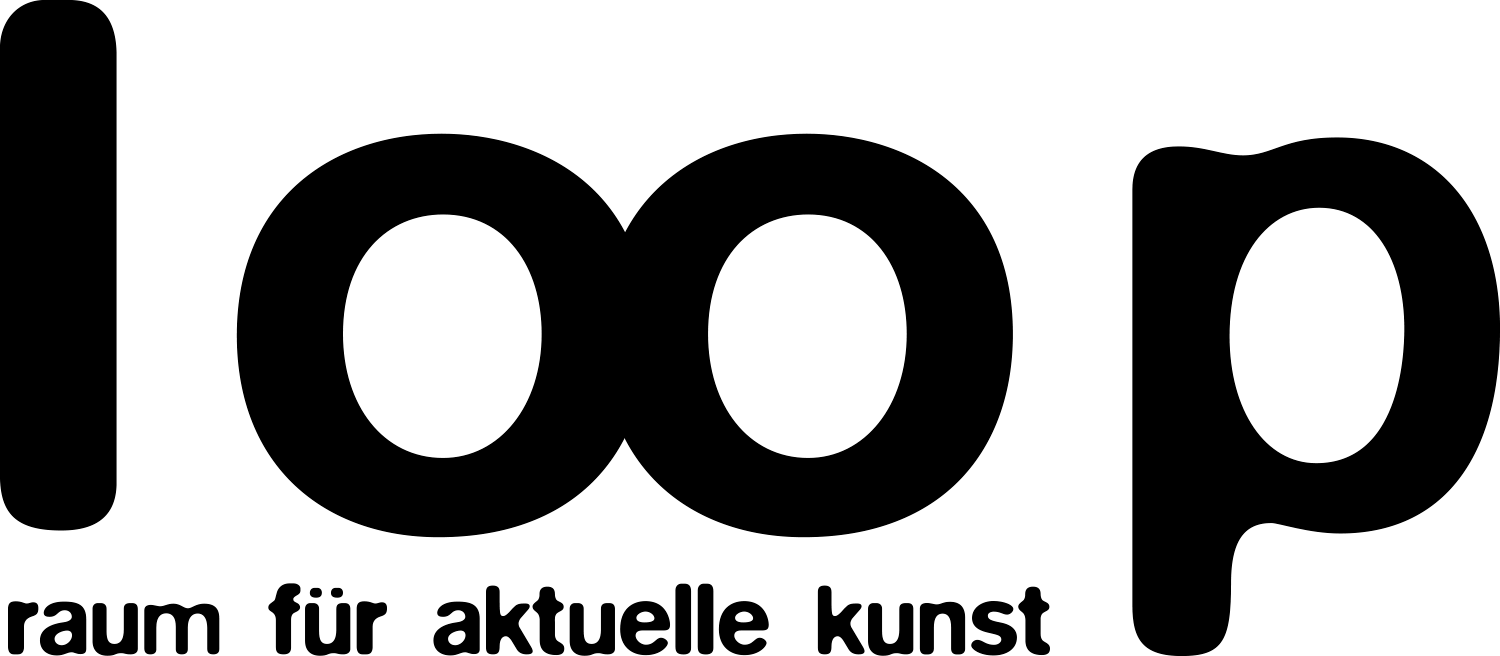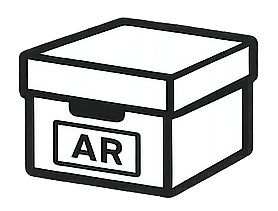

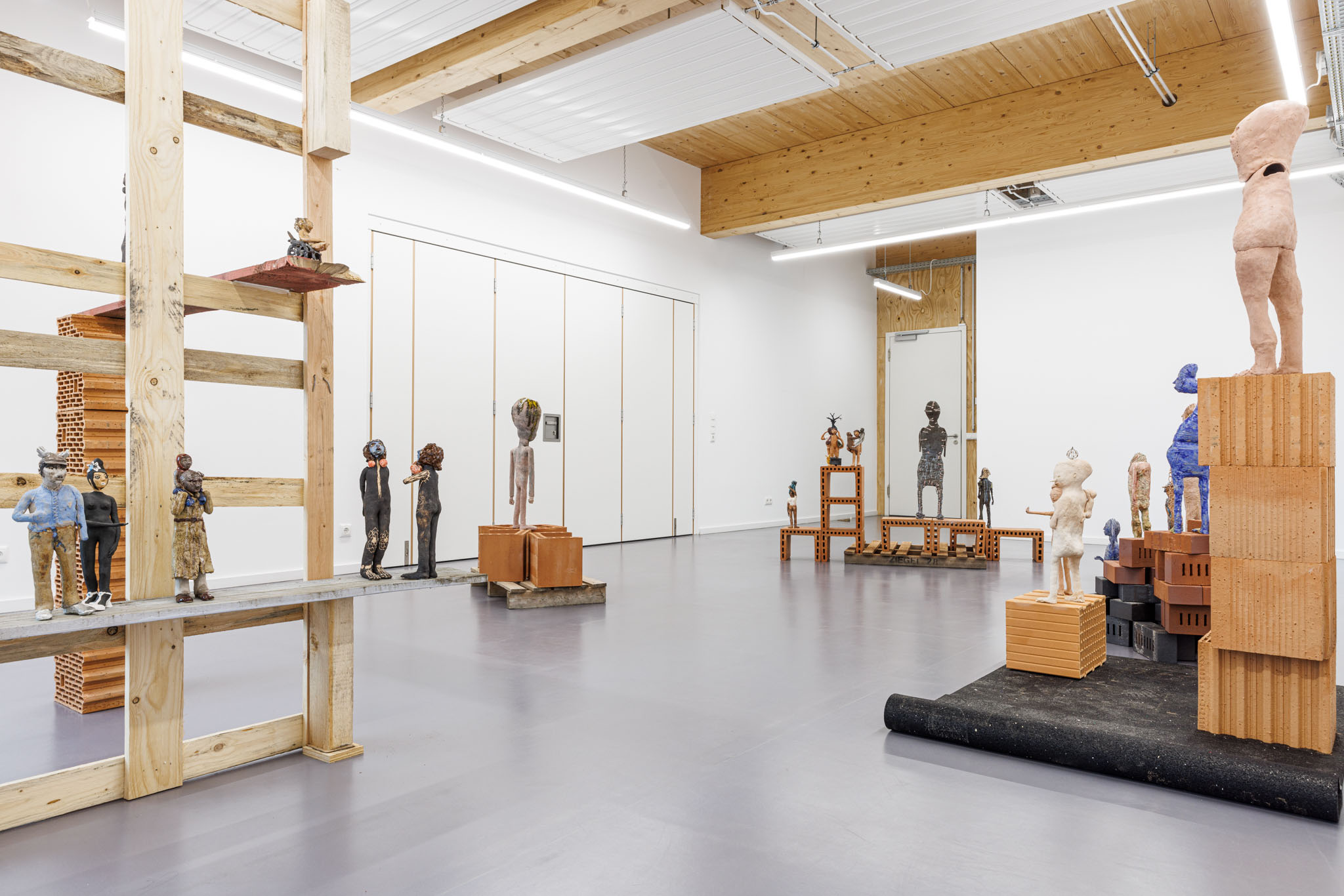

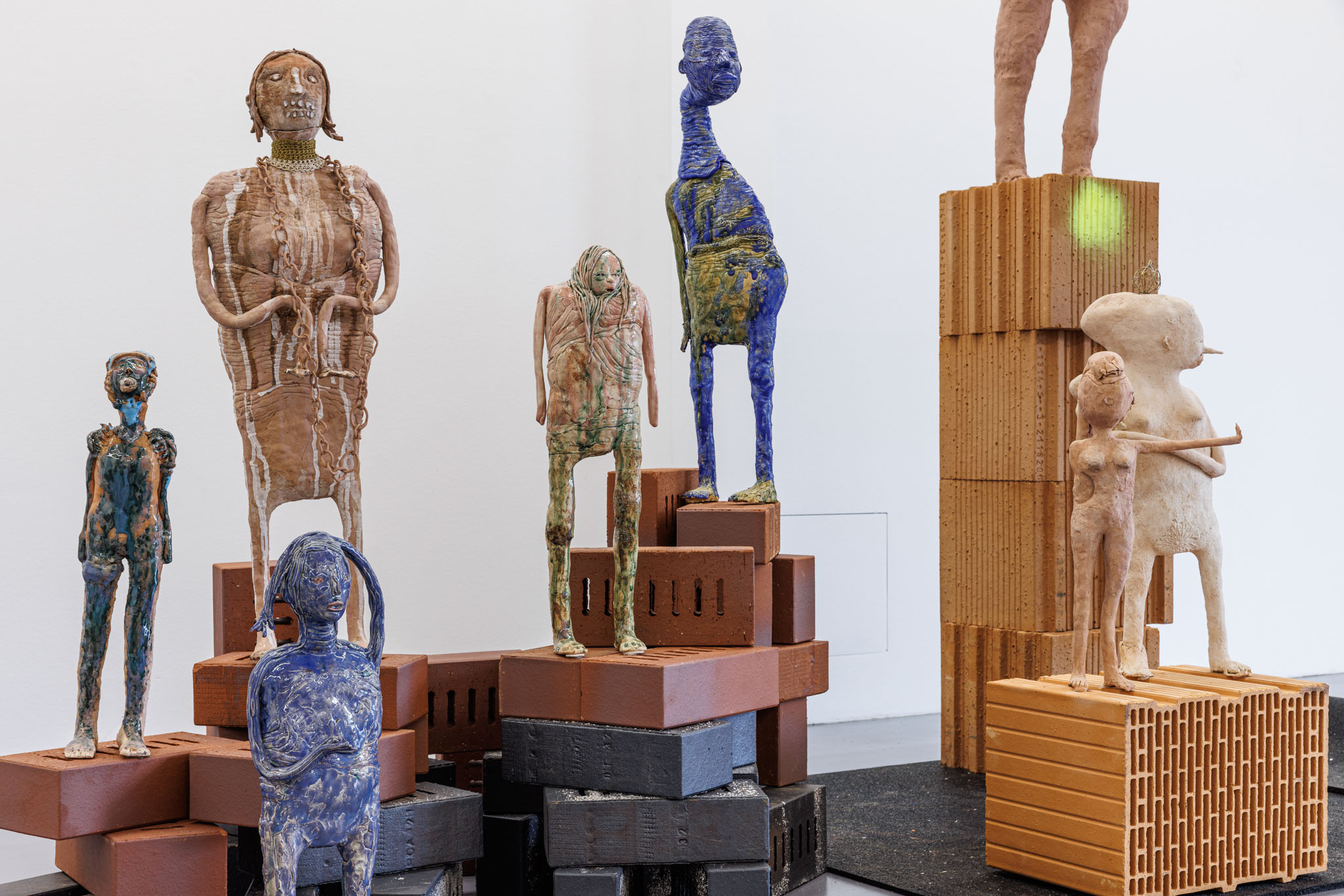





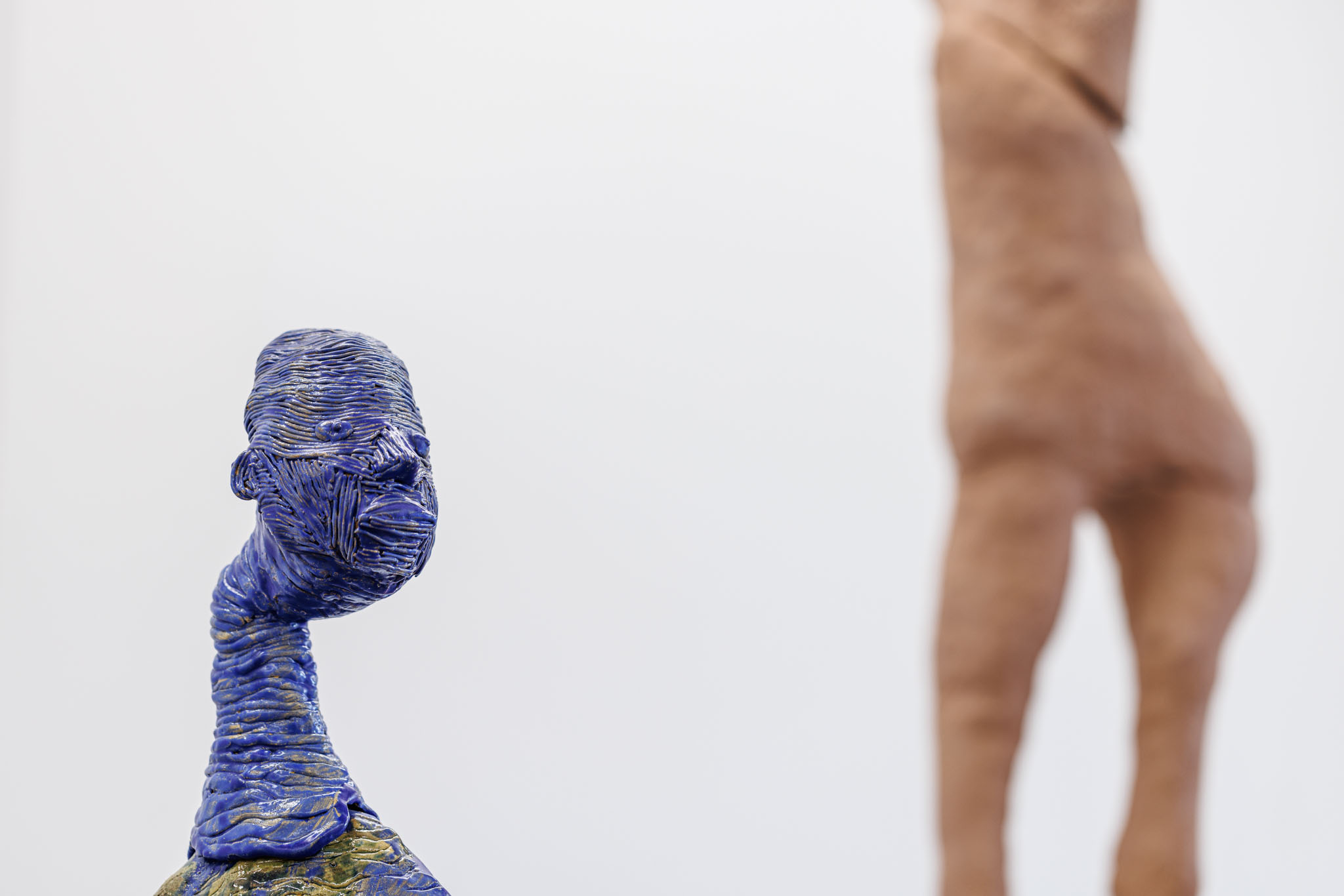
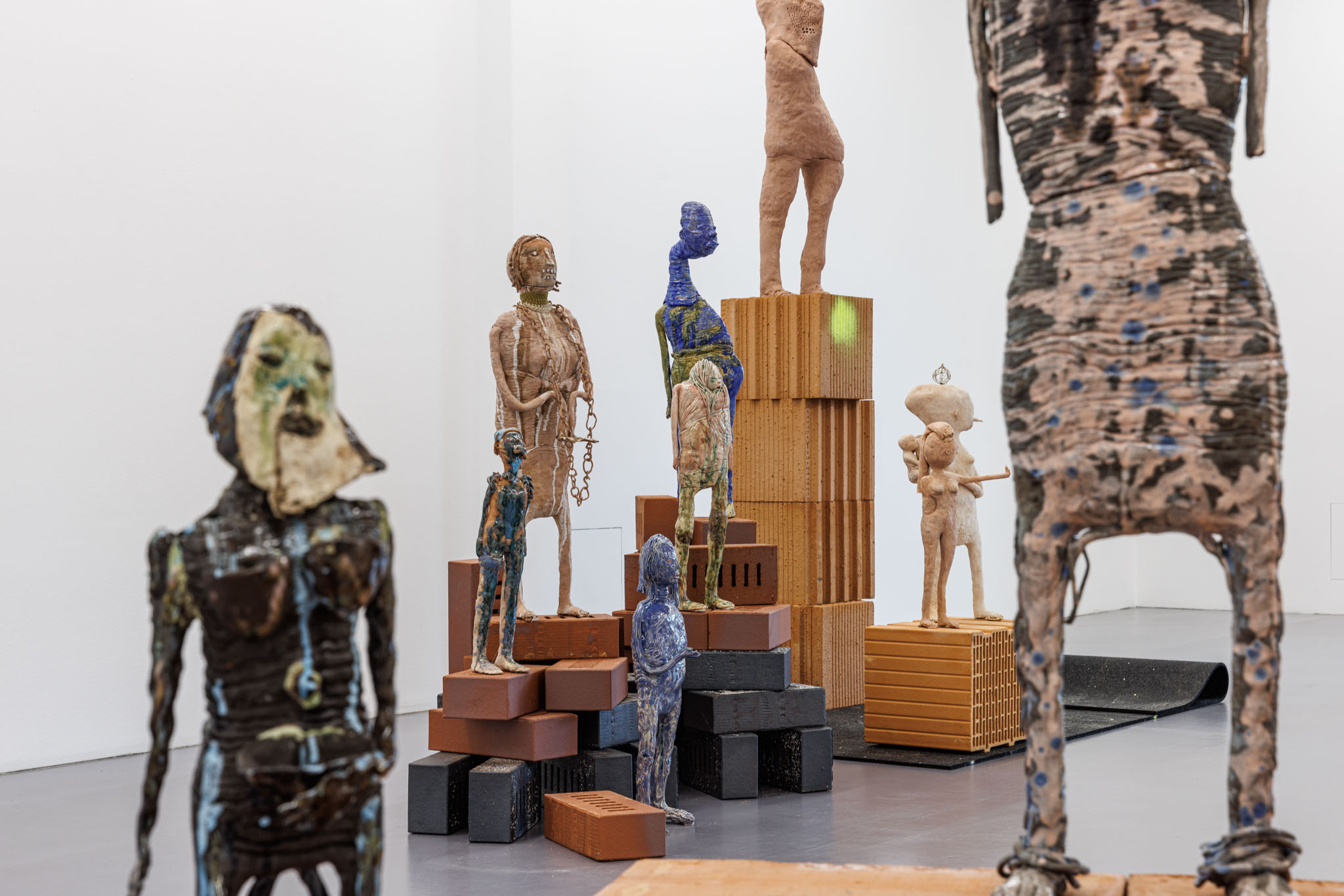



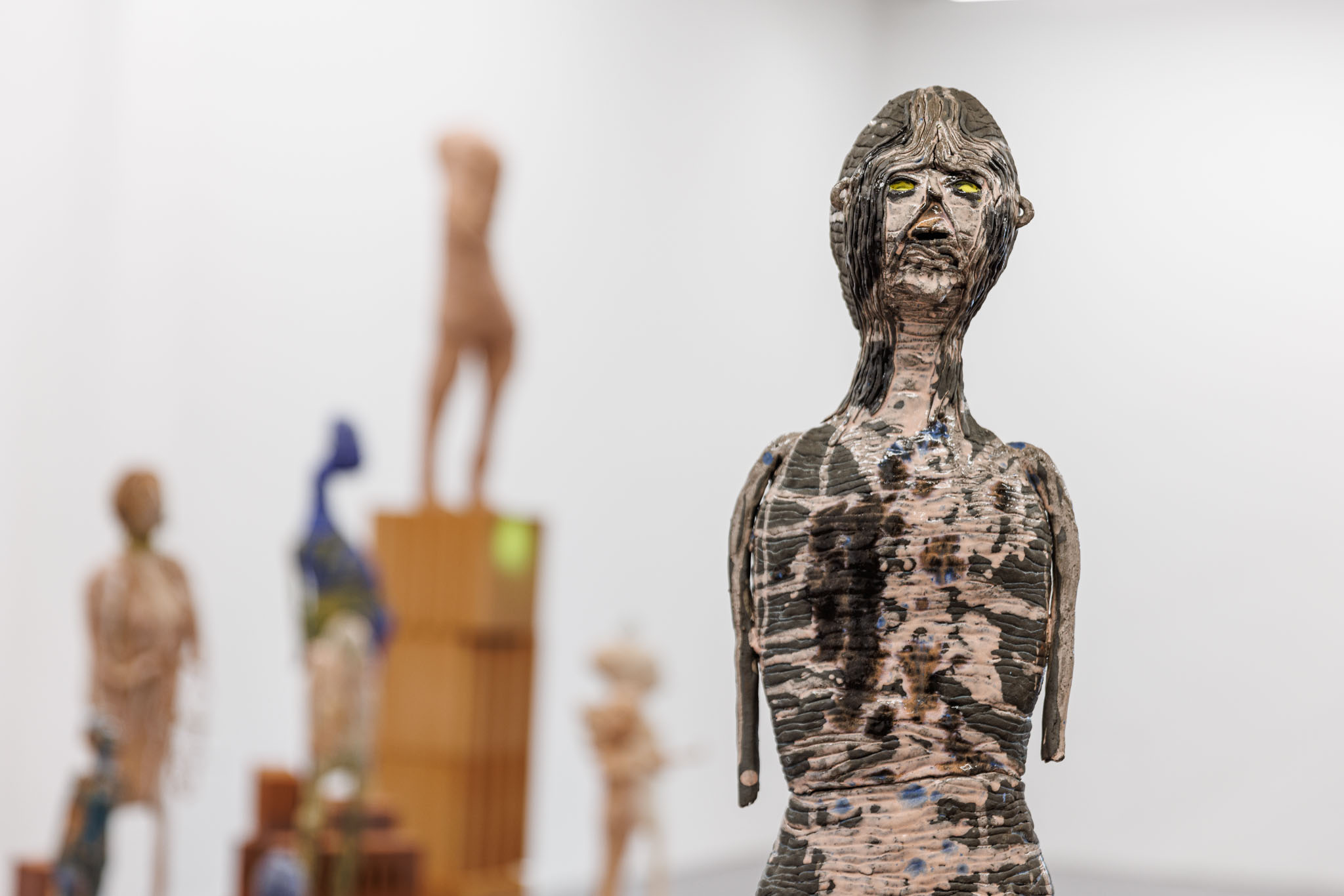













Susanne Ring - URBAN NATIVES
Humanity is characterized by its diversity and the diversity of its identities: we are all different. We all feel differently. And we all act and move in different ways.These associations also open up in the sculptures of sculptor Susanne Ring: her figures could not be more different in their appearance. The sculptures, created from clay, stone, wood and various pigments, present a variety of physicalities and characters. The humanoid sculptures seem to come from another reality. With their intense gazes, missing or oversized extremities, and a wide variety of features, they seem alien at first glance. But is this really the case? Perhaps these figures are more similar to us than we think or want to admit. Our reality consists of different levels that coexist close to each other: Sculpture, as a contemporary expression, can create a link here and show that there is no divergence between these realities. On the contrary, even if normality sometimes seems remote, it still remains natural and everyday. Subconsciously, this realization takes place in the collective gaze and mixes with the behavior of how a person acts as an individual and moves in a crowd, but also in society. This cognition is connected with the most diverse sensations that are triggered by the diversity and identity of the sculptures: the spectrum moves from threat to care and gentleness.
A particular motif in Susanne Ring's works is change: although the sculptures also appear self-sufficient and convey their own messages, encompassing the entire polychromy of the human condition, they can also open up new thematic fields and contexts in interplay with other figures and in ensemble. The new exhibition URBAN NATIVES at the B-Part Exhibition at Gleisdreieckpark takes advantage of this. Ring's sculptures are placed in an urban context, as is often the case with the exhibitions at the B-Part Exhibition. In the exhibition space, which is part of the Urban Center Am Gleisdreieck, themes related to the city and life in the city are brought to the fore, and linked to overarching themes. Thus, Susanne Ring's works are placed in the middle of a setting that can be associated with various aspects of urbanity: Like a melting pot, the sculptures stand for the diversities and identities of life and people in the urban landscape. It is about the perception of the city of the future: How do people move in the city? How do they feel? What do they see? What don't they see? And what do they perhaps not want to see? It is a mixture of disorientation and stability, lack of opportunity and promise, that makes up life in the city and the fascination of the figures, inviting our gaze to glide through the ensembles and encounter ever new associations.
At the same time, Susanne Ring has always strived for harmony in her sculptural compositions, which reflects her aesthetic and sculptural conception. The forms and proportions emerge in the work process and in the end become a harmonious whole. Ring is concerned with the multifaceted nature of her works and not with a classical image of beauty and aesthetics. Ring understands her sculptures as vessels that are filled qua context. The idea is obvious, since both the vessel and the material clay, with which the artist mostly works, have been connected to humans since time immemorial. And yet they could not be more contemporary, as the works and the current exhibition reveal. While the artist sees in them a metaphor for the human body with its individual history and own body memory, the concept of the container can also be thought of further. The sculptural figures create space that can be expressed both temporally and spatially: in this way, the ensembles create spaces for thought and relationships and, in walking through the space, the impression of time spaces.
With these many different facets and nuances, the artist's figures also touch on overarching themes: Through the fragmentation and fragility of the works, questions about the existence of man, about life, death, faith, love and hope always resonate in the individual works, but also in the ensembles.
The B-Part Exhibition space accompanies the future development of the Urbane Mitte Am Gleisdreieck with artistic autonomy and thus at the same time enters into a dialogue with the overarching themes of the overall project - forms of New Work, Co-working, Culture and Sport - and creates synergies between artistic, cultural and social approaches. The artistic director of the B-Part Exhibition is Rüdiger Lange (loop - raum für aktuelle kunst).
Humanity is characterized by its diversity and the diversity of its identities: we are all different. We all feel differently. And we all act and move in different ways.These associations also open up in the sculptures of sculptor Susanne Ring: her figures could not be more different in their appearance. The sculptures, created from clay, stone, wood and various pigments, present a variety of physicalities and characters. The humanoid sculptures seem to come from another reality. With their intense gazes, missing or oversized extremities, and a wide variety of features, they seem alien at first glance. But is this really the case? Perhaps these figures are more similar to us than we think or want to admit. Our reality consists of different levels that coexist close to each other: Sculpture, as a contemporary expression, can create a link here and show that there is no divergence between these realities. On the contrary, even if normality sometimes seems remote, it still remains natural and everyday. Subconsciously, this realization takes place in the collective gaze and mixes with the behavior of how a person acts as an individual and moves in a crowd, but also in society. This cognition is connected with the most diverse sensations that are triggered by the diversity and identity of the sculptures: the spectrum moves from threat to care and gentleness.
A particular motif in Susanne Ring's works is change: although the sculptures also appear self-sufficient and convey their own messages, encompassing the entire polychromy of the human condition, they can also open up new thematic fields and contexts in interplay with other figures and in ensemble. The new exhibition URBAN NATIVES at the B-Part Exhibition at Gleisdreieckpark takes advantage of this. Ring's sculptures are placed in an urban context, as is often the case with the exhibitions at the B-Part Exhibition. In the exhibition space, which is part of the Urban Center Am Gleisdreieck, themes related to the city and life in the city are brought to the fore, and linked to overarching themes. Thus, Susanne Ring's works are placed in the middle of a setting that can be associated with various aspects of urbanity: Like a melting pot, the sculptures stand for the diversities and identities of life and people in the urban landscape. It is about the perception of the city of the future: How do people move in the city? How do they feel? What do they see? What don't they see? And what do they perhaps not want to see? It is a mixture of disorientation and stability, lack of opportunity and promise, that makes up life in the city and the fascination of the figures, inviting our gaze to glide through the ensembles and encounter ever new associations.
At the same time, Susanne Ring has always strived for harmony in her sculptural compositions, which reflects her aesthetic and sculptural conception. The forms and proportions emerge in the work process and in the end become a harmonious whole. Ring is concerned with the multifaceted nature of her works and not with a classical image of beauty and aesthetics. Ring understands her sculptures as vessels that are filled qua context. The idea is obvious, since both the vessel and the material clay, with which the artist mostly works, have been connected to humans since time immemorial. And yet they could not be more contemporary, as the works and the current exhibition reveal. While the artist sees in them a metaphor for the human body with its individual history and own body memory, the concept of the container can also be thought of further. The sculptural figures create space that can be expressed both temporally and spatially: in this way, the ensembles create spaces for thought and relationships and, in walking through the space, the impression of time spaces.
With these many different facets and nuances, the artist's figures also touch on overarching themes: Through the fragmentation and fragility of the works, questions about the existence of man, about life, death, faith, love and hope always resonate in the individual works, but also in the ensembles.
The B-Part Exhibition space accompanies the future development of the Urbane Mitte Am Gleisdreieck with artistic autonomy and thus at the same time enters into a dialogue with the overarching themes of the overall project - forms of New Work, Co-working, Culture and Sport - and creates synergies between artistic, cultural and social approaches. The artistic director of the B-Part Exhibition is Rüdiger Lange (loop - raum für aktuelle kunst).
